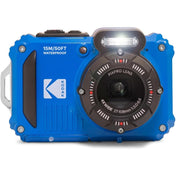Taking striking portraits is an art form that combines technical skills with an eye for detail. Whether you are a budding photographer or a seasoned professional, mastering the techniques of portrait photography can elevate your work to new heights. In this article, we delve into essential tips and techniques that will help you capture stunning portraits every time you click the shutter, including how to make the most out of your Nikon Z6 III.
Understanding Portrait Photography
Portrait photography is a specialized field that emphasizes capturing the personality and emotion of a subject. It can range from formal posed images to candid shots that reveal genuine moments. The key is to convey a story or emotion through your photographs, making the viewer feel connected to the subject.
The Importance of Light
Light is arguably the most crucial element in portrait photography. Understanding how to manipulate natural and artificial light can transform your images. Here are some tips:
- Golden Hour: This is the time shortly after sunrise or before sunset when the light is soft and warm. It creates a flattering glow on the subject, perfect for portraits.
- Overcast Days: Don’t shy away from cloudy days. The diffused light can create beautiful, even skin tones.
- Artificial Lighting: If you’re shooting indoors, invest in good quality lighting. Simple softboxes can eliminate harsh shadows and provide a well-lit scene.
Choosing the Right Location
The background plays an essential role in portrait photography. A cluttered background can distract from the subject. Here’s how to select the perfect location:
- Simplicity: Aim for a plain backdrop that complements your subject. This could be a solid wall, a natural setting, or an unobtrusive texture.
- Context: Sometimes, the environment can tell a story. Choose a location that reflects something meaningful about the subject.
- Access to Natural Light: Always consider the availability of light. Locations with large windows can be a photographer's dream.
Camera Settings for Stunning Portraits
Your camera settings can dramatically influence the outcome of your portraits. When using a camera like the Nikon Z6 III, consider these settings for optimal results:
Aperture Settings
Using a wide aperture (like f/1.8 or f/2.8) dramatically blurs the background, keeping the focus on your subject. This technique is known as bokeh, and it adds depth to your portrait.
Shutter Speed
A shutter speed of at least 1/125 seconds is ideal for portraits, especially if your subject is moving. For posed portraits, you can go slower, but ensure that camera shake is not an issue.
ISO Settings
Keep your ISO as low as possible to avoid grainy images. In low-light conditions, raise your ISO to get the right exposure without compromising quality. The Nikon Z6 III performs exceptionally well in higher ISO settings, making it a great choice for diverse shooting conditions.
Posing Techniques
How you pose your subjects can make or break your portrait. Here are some effective posing techniques to keep in mind:
Relaxation is Key
A relaxed subject will photograph better than a tense one. Spend time getting to know your client, engaging them in conversation to ease any nerves.
Body Positioning
Direct your subject to face slightly away from the camera rather than looking straight on. This can create a more flattering angle and showcase the contours of their face.
Hands and Arms
Don’t let arms hang limply by the sides. Suggestions for providing structure include having your subject place their hands on their hips or gently touching their face or hair.
Communicating with Your Subject
Effective communication can change the entire dynamic of a photo session. Here’s how you can create a friendly atmosphere:
- Give Clear Instructions: Educate your subject on how to pose comfortably. Demonstrate poses if necessary.
- Provide Feedback: Let subjects know when they look great. Encouragement can build their confidence and improve the overall shots.
- Be Yourself: A relaxed and authentic presence will help your subject feel comfortable.
Post-Processing Tips
Once you've captured those incredible portraits, the next step is post-processing. Here are some top tips to enhance your images:
Basic Adjustments
Make sure to adjust the brightness, contrast, and saturation in your favorite editing software. These adjustments can help your portrait stand out.
Retouching Skin
Use retouching tools to enhance skin tones and smooth out blemishes. However, be cautious to maintain a natural appearance.
Creative Filters and Effects
Consider using creative filters for artistic effects. Don’t overdo it, as the goal is to enhance, not overshadow your subject’s natural beauty.
Exploring Different Styles of Portraits
Portrait photography isn’t one-size-fits-all. Understanding various styles can expand your repertoire and attract different clients:
Traditional Portraits
Traditional poses often involve subjects looking directly at the camera. These are typically shot in controlled environments. A classic choice for formal occasions such as weddings or corporate events.
Candid Portraits
Candid photography captures a subject in their natural element, often leading to genuine expressions. This style requires a keen eye to catch those fleeting moments.
Environmental Portraits
These portraits blend the subject with their surroundings, conveying context alongside personality. Use the Nikon Z6 III to capture rich details in both the subject and background.
Building Your Portfolio
As you continue to practice and develop your skills, consider building a portfolio of your work. Choose diverse examples that showcase your range and style, capturing various subjects, settings, and moods.
Networking and Collaboration
Connect with fellow photographers and engage in collaborative projects. Not only does this provide additional networking opportunities, but it can also introduce you to new techniques and styles.
Feedback and Iteration
Seek feedback from trusted peers and clients. Constructive criticism can be invaluable for personal growth and skill enhancement.
Your Next Steps in Portrait Photography
Mastering portrait photography is a journey that never truly ends. As you explore different techniques and develop your unique style, remember that practice is essential. Continue experimenting with your Nikon Z6 III in various settings and conditions, and don’t shy away from stepping outside of your comfort zone.
Every photographer has a vision, and enhancing your portrait skills can help you bring that vision to life. Embrace the challenges and revel in the successes as you refine your art. Be patient with yourself; great portraits take time, effort, and dedication.
Now, go out there and capture unforgettable portraits that tell stories and resonate with viewers for years to come!











